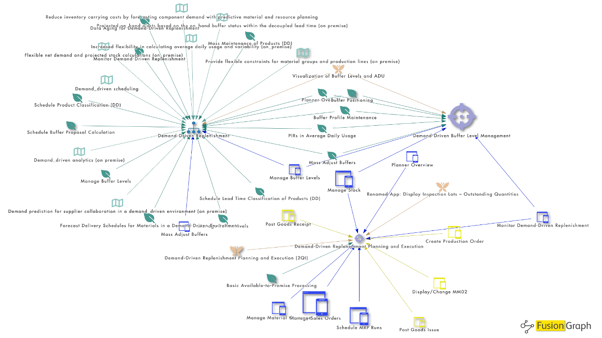2 min read
SAP S/4HANA Roadmap: A Definitive Guide for Business Transformation
In today's fiercely competitive global market, we should recognise the indispensable role of dynamic and robust...


.png)
Demand sensing is a process that uses advanced algorithms and machine learning techniques to analyse real-time data and provide accurate demand forecasts. In SAP S/4 HANA, demand sensing is a module in Integrated Business Planning. (IBP) that enables companies to improve their supply chain planning by providing accurate and timely demand forecasts.
Demand sensing in SAP S/4 HANA works by collecting and analysing data from a variety of sources, such as point of sale (POS) data, social media, and weather forecasts. This data is then used to generate accurate demand forecasts, which can be used to optimise production, inventory management, and logistics.

With the help of FusionGraph it's easy to discover and understand new functionality like this and add it to your business case for S/4HANA migration.
Click the link the request a demo.
Jul 14, 2023by Tom Brown
In today's fiercely competitive global market, we should recognise the indispensable role of dynamic and robust...
Jul 13, 2023by Ross Barnes-Moore
A graphical BOM is a tree-like structure that shows the components or raw materials required to produce a product. It...
Jun 7, 2023by Ross Barnes-Moore
Enhanced Scheduling in SAP S/4 HANA is a module that provides advanced scheduling capabilities for organisations that...